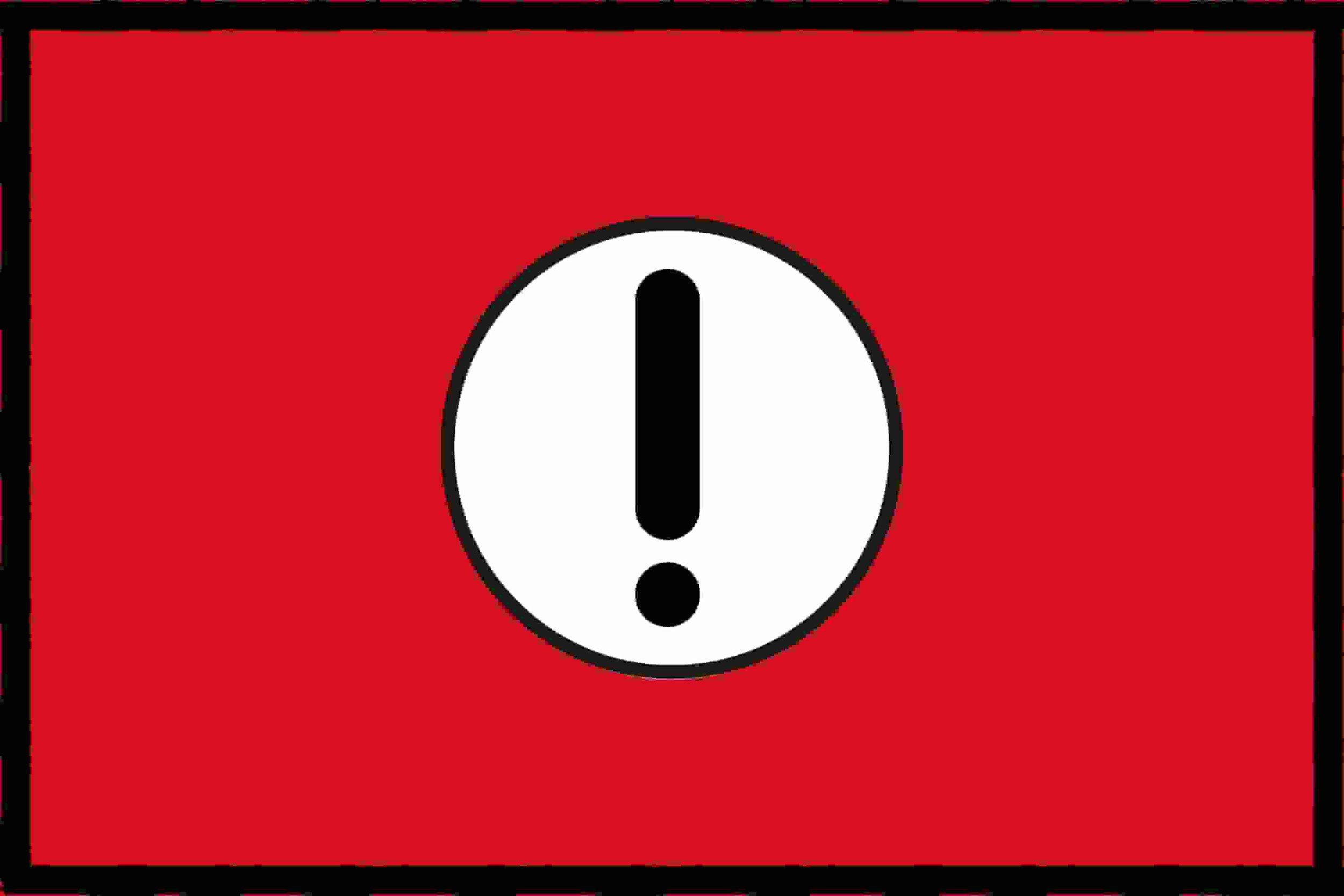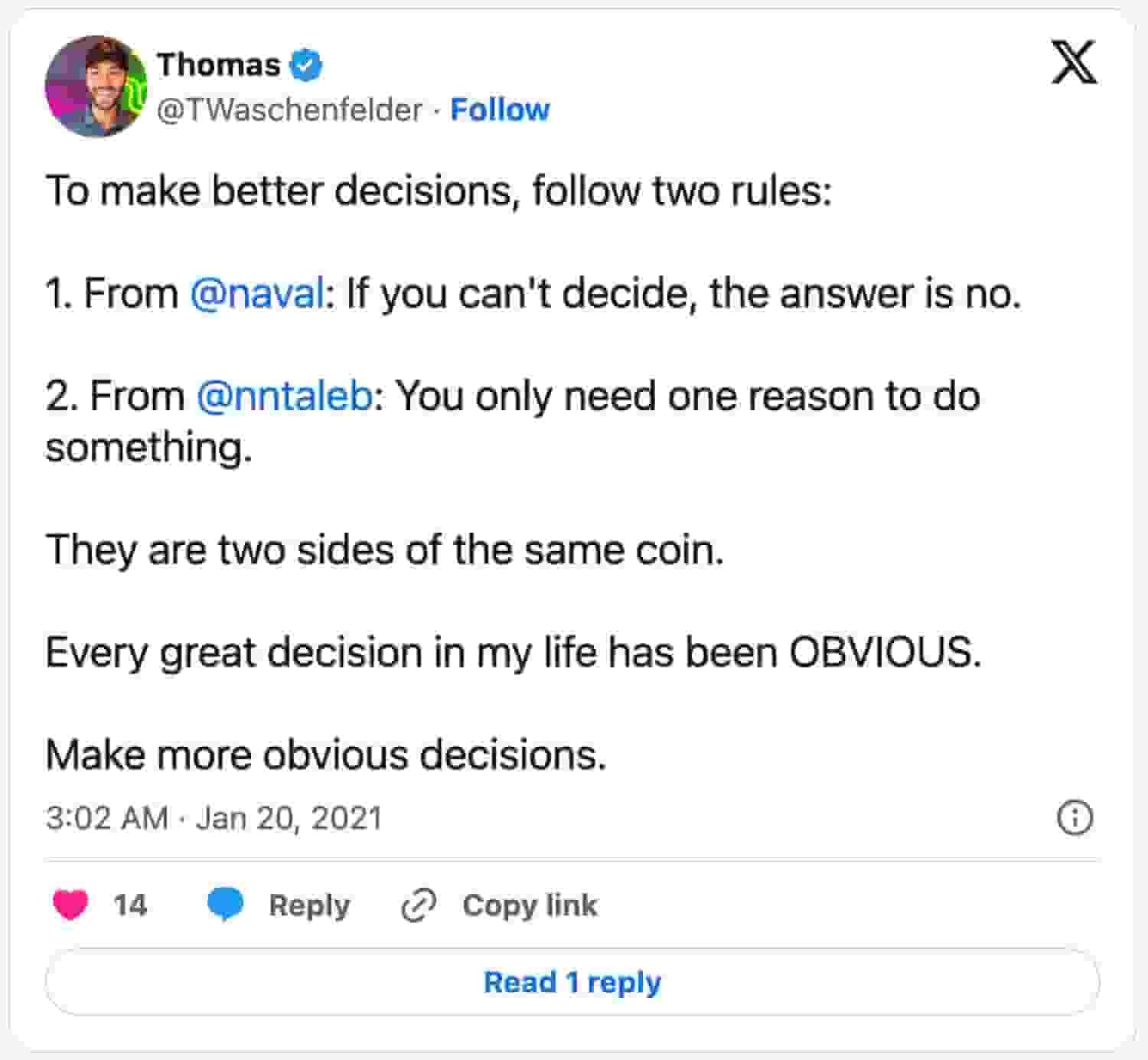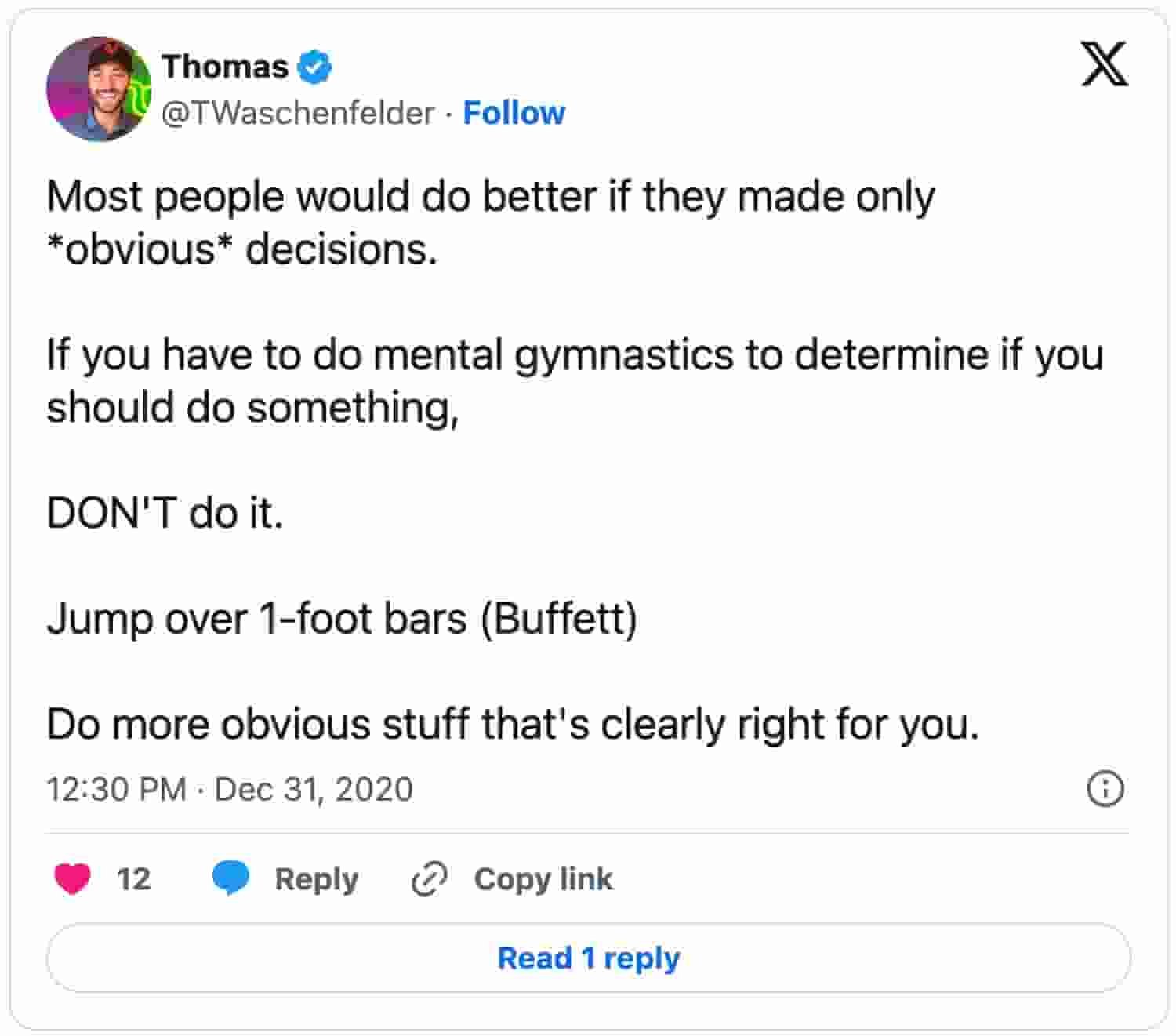The Decision Making Process: Make More Obvious Decisions
There’s a simple way to improve your decision-making process in your life: make more obvious decisions.
If it’s not slapping you across the face as an obvious “yes, I should do this right now,” then don’t do it. Just wait, and see what else comes your way.
The best decisions in my life were abundantly obvious. Marrying my wife was a no-brainer. Leaving my hometown at 18 to pursue a creative career, also obvious. Creating an online blog to scale ideas - of course! That’s a low risk, high reward bet. It’s an easy “yes.”
Most people would do much better only to make very obvious decisions. Here are some decision-making models to help guide you.
Naval Ravikant: If You Can't Decide, The Answer Is No.
This model is one of my favorites because it’s dead simple to remember.
“If you can’t decide, the answer is no.”
Naval Ravikant advises that if you are undecided about a major decision like getting married, taking a job, buying a house, moving to a new city, etc., don’t do it.
You don’t want to lock yourself into something if you’re undecided because you actually have far more options than you think you do.
Here’s Naval explaining his model in The Almanack of Naval Ravikant:
If you cannot decide, the answer is no. And the reason is, modern society is full of options. There are tons and tons of options. We live on a planet of seven billion people, and we are connected to everybody on the internet. There are hundreds of thousands of careers available to you. There are so many choices. You’re biologically not built to realize how many choices there are.
Evolution Gave You a Scarcity Mindset.
Naval tells us that humans evolved in small tribes of 150 people, so options were severely limited regarding finding a mate, setting up a basecamp, etc. Basically, you took the one or two options you had.
This scarcity mindset persists in all of us today. You value things that are scarce and often underestimate the number of other options you have.
Just go to LinkedIn or Indeed and take a look at all the jobs you are mildly qualified for. I bet you can find ten jobs in 60-seconds. There are so many options! You don’t have to take that one job because you were offered it.
The Consequences of Big Decisions Last A Long Time.
The other reason this model works is that it keeps you from making a non-obvious decision that locks you in for a really long time.
The average time you’ll spend in a job is about 4.6 years. A marriage is supposed to last your entire life. These are big chunks of your life! If you get these wrong, that’s a lot of needless pain and suffering.
Here’s Naval again:
When you choose something, you get locked in for a long time. Starting a business may take ten years. You start a relationship that will be five years or maybe more. You move to a city for ten to twenty years. These are very, very long-lived decisions. It’s very, very important we only say yes when we are pretty certain. You’re never going to be absolutely certain, but you’re going to be very certain.
So, get as close to “certain” as you can, and then (and only then!) jump in. That’s good decision making.
Nassim Nicholas Taleb: You Only Need One Reason To Do Something.
This is the other side of the same coin. You should not have to talk yourself into obvious decisions. If you have one, crystal clear reason to do something, then do it.
Nassim Nicholas Taleb writes in his book, Antifragile: Things That Gain From Disorder:
If you have more than one reason to do something… just don’t do it. It does not mean that one reason is better than two, just that by invoking more than one reason you are trying to convince yourself to do something. Obvious decisions (robust to error) require no more than a single reason.
Many people attempt to talk themselves into decisions that are not obvious. They create “pros” and “cons” lists for the decision and weigh them against each other.
Obvious decisions only need one reason. That’s why they are obvious! Make more obvious decisions and avoid complicated ones.
Warren Buffett: Step Over one-Foot Bars.
To make better decisions, aim to “step over one-foot bars.” This is Warren Buffett’s term for making obvious decisions inside your circle of competence.
In Buffett’s 1989 letter to Berkshire Hathaway shareholders, he explains exactly why he and Charlie Munger stick to obvious decisions:
Easy does it. After 25 years… Charlie and I have not learned how to solve difficult business problems. What we have learned is to avoid them…We concentrated on identifying one-foot hurdles that we could step over… in both business and investments, it is usually far more profitable to simply stick with the easy and obvious than it is to resolve the difficult.
Buffett has built Berkshire Hathaway on the back of this simple model. They don’t jump over ten-foot bars.
Start Making Better Decisions Now.
You don’t have to be a genius to start making better decisions right now. You just have to start making obvious ones.
If it’s not obvious, don’t do it.
Special thanks to Emma Cranston for her help in creating this article.
If You Want More Content Like This, Follow Me On Twitter And Subscribe To My Newsletter:
—
ARTICLE SOURCES
Taleb, Nassim Nicholas. Antifragile: Things That Gain From Disorder (Incerto). Random House Publishing Group. Kindle Edition.
Warren Buffett’s 1989 letter to Berkshire Hathaway shareholders: https://www.berkshirehathaway.com/letters/1989.html
Jorgenson, Eric. The Almanack of Naval Ravikant: A Guide to Wealth and Happiness. Magrathea Publishing. Kindle Edition.





